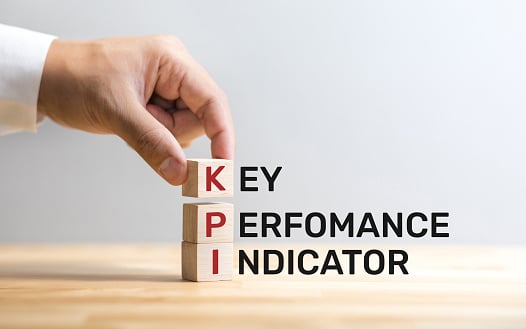5 Factors Influencing Marketing Spend Optimization Efforts
Learn how Regions Bank Perfected their customer journey
As the media mix continues to expand across offline and online channels, consumers are engaging with campaign efforts at a rapid pace. This means marketers have to pay close attention to campaign success rates in order to optimize marketing spend. This is especially true as business stakeholders increasingly look to marketing teams to justify the cost of each campaign with definitive ROI.
As marketers weigh the benefits of their campaigns against the price, they must be aware of several factors directly impacting marketing spend optimization efforts, and what can be done to harness these factors in a way that is beneficial of our campaigns.
Why is Marketing Spend Optimization Important?
To get basics, marketing spend describes the budget that is allocated toward specific tactics or programs including webinars, paid advertising, or content.With so many tools at our fingertips, it’s easy to subscribe to new solutions and let them charge a recurring fee on our company credit card without really considering what we are getting for our money. However, in order to properly measure and track all your marketing and sales efforts, it’s important to constantly be auditing the tools and reporting metrics in use. Failure to do so can result in overspend on paid campaigns and time wasted on platforms that don’t make a difference. Having the best overall picture of your efforts can help you optimize your media spend as the data will show you which platforms and campaigns are top performers.
What Impacts Marketing Spend Optimization?
An effective omnichannel strategy means seamless user experience and integration across platforms and channels. This overall goal can be beneficial to spend optimization. Marketers have to be hyper aware of consumer preferences and past interactions, making each effort more targeted and therefore more fruitful. However, it can also challenge spend optimization efforts in that one misstep in evaluating what consumer preferences are, or in delivering on them, can result in reduced engagement or trust, and thus reduced ROI.
As marketers adapt to meet the changing demands of of consumers, they need to regularly evaluate the impact new tactics have on the success of their campaigns and overall ROI. From there they can course correct campaigns to allocate more spend to those tactics that drive engagements. In this process, marketers should keep in mind the following five factors that can impact spend optimization positively or negatively depending on how they are executed:
1. Customers’ Preferred Channels
The best way to reach an audience is to know where they are active online. In every industry, consumers have preferred channels, times, and creative they want to engage with. For instance, attempting to target sales managers with ads that run continuously aren’t likely going to be as effective or optimized as targeted ad campaigns that are only set to run during business hours, when sales managers are at their desk and have their responsibilities on top of mind.
The same goes for online platforms as well: will you be able to reach as many sales managers with Snapchat ads that you would with a targeted campaign on Facebook or Linkedin? Probably not. Online platforms are used by different audiences for different reasons.
In addition to where and when customers are online, what catches their attention tends to be different across demographics and industries. Modern design elements might be more appealing to millennials, whereas design with a small font or cluttered text makes creative collateral like banners or ads harder to read for older audiences.
Constantly strive to place more of your marketing efforts and spend where your customers are most (this is the Pareto principle in action).
2. Marketing and Sales Alignment
Once you’re on the same page with your team about where and how you should be targeting your audience, it’s important to come together with other teams to make sure they know how to best reach your customers. This is especially the case with the Sales team. Failure to align marketing and sales (sometimes called “smarketing”) can result in mixed messaging, unfair expectations, and missed opportunities.
Because both these teams are attempting to attract the same audience, just through different means, collaborating makes a huge difference. Digital Marketing Institute recommends having consistent processes and terminology across both teams. This means that both teams are aware of how long specific services or products take to fulfill and communicate this to customers. Also using the same wording for specific industry terms ensures less confusion and more streamlined communications, as both teams understand what the other wants and needs in any information they share. Employees need to speak up when they don’t understand something and to ask questions about their colleagues’ needs and expectations, no matter what team they are on. Clear alignment between these teams enhances understanding of target audiences and mutual goals. Applying these insights to day-to-day tasks will ultimately increase productivity thereby optimizing spend.
3. Brand Consistency
Another important aspect of smarketing that also feeds into marketing as a whole is brand consistency. In addition to obvious components of a brand, like logos and colors, the way a brand is represented must be consistent across online and offline efforts. For instance, let’s say marketing released a TV and YouTube commercial that promised a 60-Day money back guarantee because the company stands by their products. However, Customer Service wasn’t fully vetted on the guarantee and began refusing refunds to customers. In this case, there would be a big disconnect in the way the brand represents itself, which could affect the company’s bottom line.
This is confusing and frustrating for customers, and goes past missed expectations. If a company’s offerings or even their content is different among various channels, customers can get confused and as a result, be less likely to keep the company top-of-mind the next time they need a related product or service, meaning spend on this brand campaign was wasted.
4. Ineffective Analytics Tools
Many marketers are unsure or unaware of issues like lack of brand consistency or improper media spend optimization because they don’t have the best analytics and insights tools that show actionable data that can drive decisions.
For instance, a lack of accurate and fresh data can impact analysis. Analytics data must be generated quickly in order to effectively see how campaigns are running. Instant data offers the ability to make faster decisions, which can help optimize marketing spend and better improve the campaign over time.
Another issue is that marketers have the data they need, but aren’t sure how to interpret it to best understand campaign performance. These issues not only affect reporting, but also the ability to improve and optimize campaigns based on their outcomes. Focus on better data gathering, reporting, and analysis for more optimized campaigns.
5. Data-Based Decisions
Using data to properly make decisions is dominating marketing strategy in today’s market. Decision-making without data is often akin to throwing a dart at a dartboard blindfolded: there is a chance you’ll hit the target, but oftentimes, the effort lands far away from its intended outcome. Combining experience with data analysis continues to get easier with today’s current marketing technology. The ability to view data from all offline and online marketing platforms is the best way to see how campaigns are not only performing separately but working together to reach the intended audience in a way that makes an impact.
Final Thoughts
One of the most exciting things about marketing is how it continues to evolve with new tools, strategies, and advertising techniques. However, marketers must constantly be aware of the value these tools and tactics bring. Staying on top of trends in marketing technology can help your team better optimize campaigns, but only when done right. Be sure to consider these five factors when thinking about marketing spend optimization, considering how investments in these areas are delivering and where improvements may need to be made.



















.jpg)
